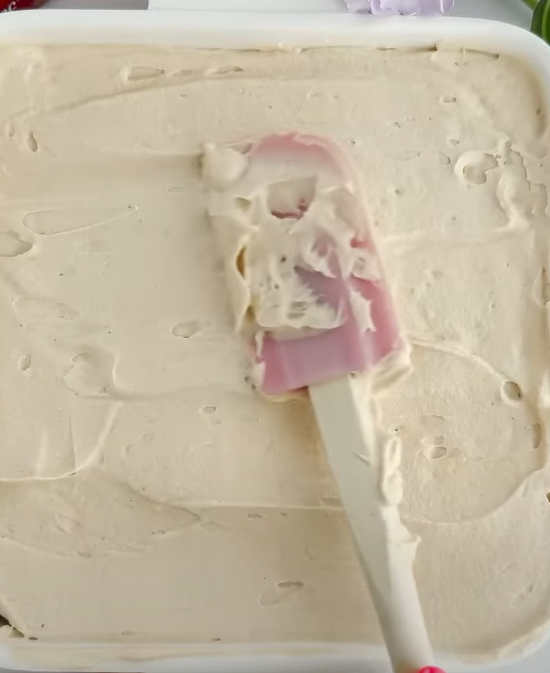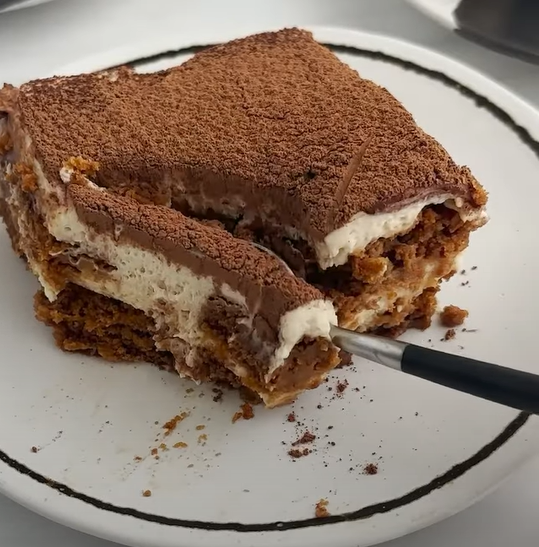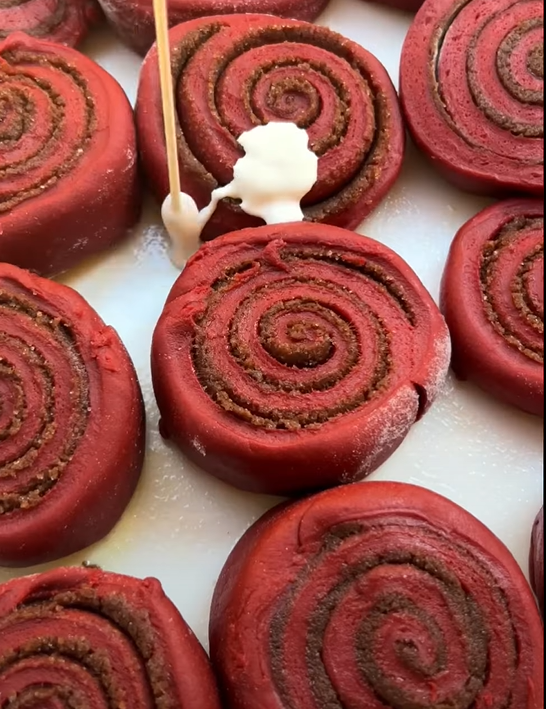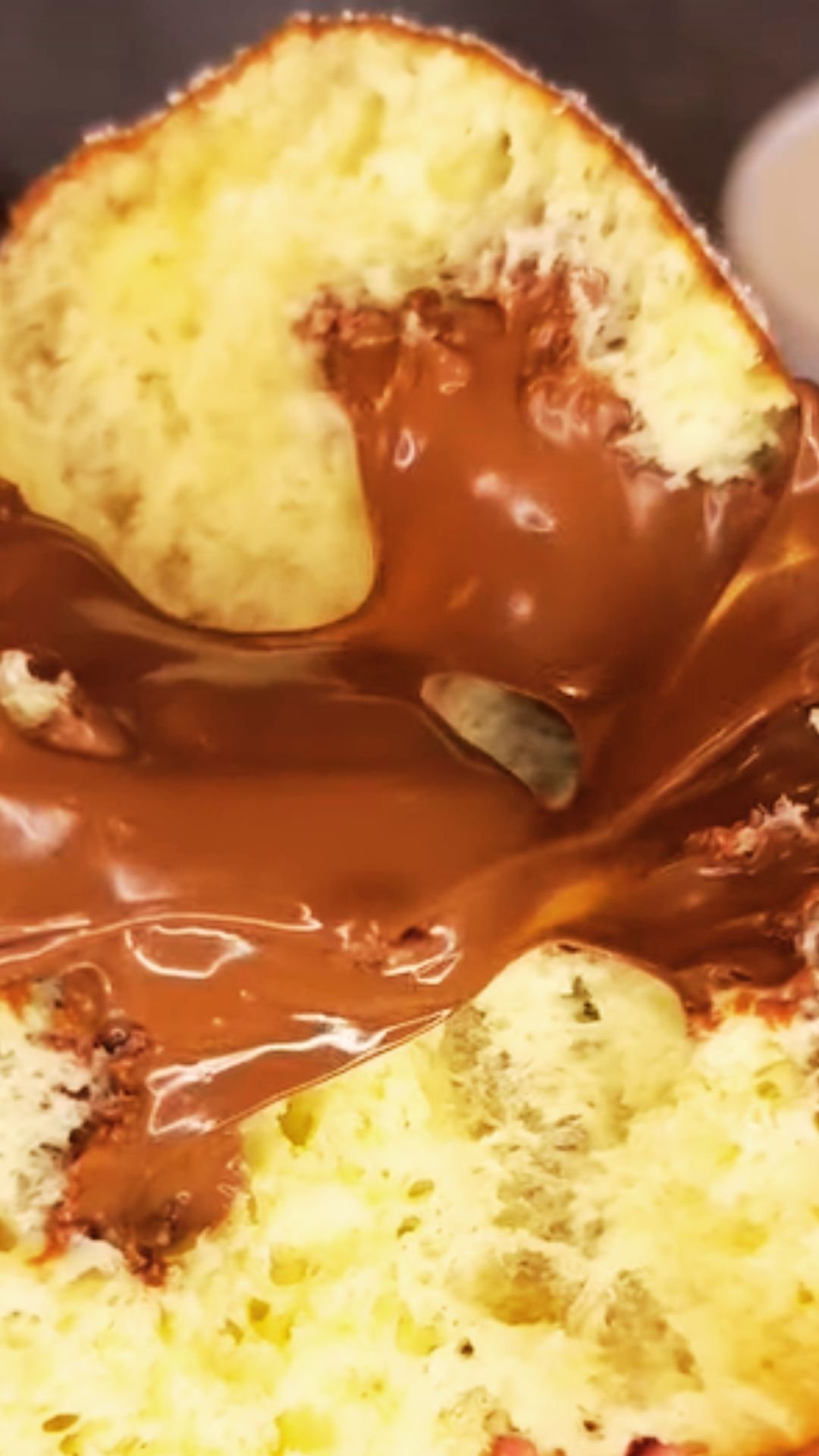When I first discovered the magic of combining Biscoff cookies with the beloved Italian dessert tiramisu, my dessert world changed forever. This isn’t just another variation – it’s a complete transformation that brings together the warm, caramelized sweetness of Belgian speculoos cookies with the creamy, coffee-infused layers that make tiramisu so irresistible.
The beauty of Biscoff tiramisu lies in its perfect balance. Where traditional tiramisu uses ladyfingers, this version showcases the distinctive cinnamon-spiced crunch of Biscoff cookies, creating layers that are both familiar and surprisingly new. I’ve spent countless hours perfecting this recipe, and I’m excited to share every secret that makes this dessert absolutely divine.
Understanding the Foundation: What Makes Biscoff Special
Biscoff cookies are Belgian speculoos biscuits known for their distinctive caramelized flavor profile. Originally created in 1932, these cookies combine brown sugar, flour, and a blend of warming spices including cinnamon, nutmeg, and cloves. The unique baking process caramelizes the sugars, creating that signature deep, toasty sweetness that pairs beautifully with coffee.
Mascarpone cheese serves as the creamy base that traditionally defines tiramisu. This Italian triple-cream cheese has a buttery texture and mild flavor that allows other ingredients to shine while providing the dessert’s characteristic richness.
Coffee component in this recipe works differently than in traditional tiramisu. The robust coffee flavor complements rather than competes with the spiced cookie notes, creating a harmonious blend that enhances both elements.
Essential Ingredients and Their Roles
| Ingredient | Quantity | Purpose | Quality Tips |
|---|---|---|---|
| Biscoff cookies | 24-30 pieces | Cookie layer base | Choose firm, unbroken cookies for best structure |
| Mascarpone cheese | 16 oz (454g) | Cream layer foundation | Room temperature for smooth mixing |
| Heavy cream | 1 cup (240ml) | Whipped texture | Cold cream whips better |
| Eggs | 3 large | Richness and binding | Fresh, room temperature |
| Granulated sugar | 3/4 cup (150g) | Sweetness balance | Fine granulation dissolves easier |
| Strong coffee | 1 1/2 cups | Soaking liquid | Cooled to room temperature |
| Biscoff spread | 1/2 cup | Flavor enhancement | Smooth variety works best |
| Vanilla extract | 1 tsp | Aromatic depth | Pure vanilla for best flavor |
| Cocoa powder | 2 tbsp | Dusting finish | Unsweetened Dutch-process |
Step-by-Step Preparation Method
Preparing the Coffee Mixture
I start by brewing strong coffee using a 1:10 ratio of coffee to water. This creates a concentrated base that won’t make the cookies soggy while still providing adequate flavor infusion. Once brewed, I let it cool completely – hot coffee will melt the mascarpone mixture and ruin the texture.
For enhanced flavor, I sometimes add a tablespoon of Biscoff spread to the warm coffee, whisking until dissolved. This creates a unified flavor profile throughout the dessert.
Creating the Mascarpone Mixture
The key to perfect tiramisu lies in the mascarpone preparation. I begin by separating the eggs, placing whites in a clean, dry bowl for whipping. The yolks go into a separate bowl where I gradually whisk in the sugar until the mixture becomes pale and thick – this usually takes about 3-4 minutes of vigorous whisking.
Next, I fold in the room-temperature mascarpone cheese, working gently to maintain the airy texture. The Biscoff spread gets incorporated at this stage, creating beautiful swirls of caramelized flavor throughout the cream base.
In the clean bowl, I whip the egg whites until they form soft peaks. This step is crucial – overwhipped whites will make the mixture grainy, while underwhipped whites won’t provide enough structure.
Finally, I whip the heavy cream in another bowl until it reaches medium peaks, then carefully fold it into the mascarpone mixture, followed by the whipped egg whites. The folding motion preserves the airiness that makes tiramisu so light and creamy.
Assembly Technique
Assembly requires patience and precision. I arrange the first layer of Biscoff cookies in a single layer at the bottom of my serving dish – typically a 9×13 inch glass dish that showcases the beautiful layers.
Working quickly, I dip each cookie briefly in the coffee mixture. The key is finding the perfect balance: too little soaking leaves the cookies hard, while too much makes them fall apart. I aim for about 2-3 seconds per cookie, ensuring they’re moistened but still maintain their structure.
After placing the soaked cookies, I spread half of the mascarpone mixture evenly over the top, using an offset spatula to create smooth, even layers. The process repeats with the second layer of cookies and remaining cream mixture.

Chilling and Setting Time
The assembled tiramisu needs at least 4 hours in the refrigerator, though I prefer overnight chilling for optimal flavor development. During this time, the coffee-soaked cookies soften further, the flavors meld together, and the cream sets to the perfect consistency.
I cover the dish tightly with plastic wrap, ensuring the wrap doesn’t touch the surface to prevent sticking. For extra protection, I sometimes place a layer of parchment paper over the tiramisu before wrapping.
Flavor Profile and Texture Analysis
| Aspect | Traditional Tiramisu | Biscoff Tiramisu | Enhancement Notes |
|---|---|---|---|
| Sweetness | Moderate, coffee-balanced | Rich, caramelized | Deeper, more complex sweetness |
| Spice Notes | Minimal | Cinnamon, nutmeg prominent | Warming spice profile |
| Cookie Texture | Soft, coffee-absorbed | Slightly firmer, spiced | Maintains more structure |
| Cream Character | Clean, mascarpone-forward | Butter-enhanced richness | Biscoff spread adds depth |
| Overall Balance | Coffee-dominant | Harmonious coffee-spice | More dessert-like than coffee-forward |
Serving and Presentation
When I serve Biscoff tiramisu, presentation matters as much as taste. I dust the top with unsweetened cocoa powder just before serving, creating an elegant finish that hints at the coffee flavors within. Sometimes I add a light dusting of cinnamon for extra visual appeal and to complement the spiced cookie flavors.
For individual servings, I like using clear glass cups or small ramekins, which showcase the beautiful layers while providing perfect portion control. Each serving should include all the layers – the visual impact is part of the dessert’s charm.
I garnish each plate with a whole Biscoff cookie standing upright in the tiramisu, creating height and immediately identifying the flavor profile. A small dollop of whipped cream on the side adds elegance, while a few coffee beans scattered around the plate complete the presentation.
Storage and Make-Ahead Tips
Biscoff tiramisu actually improves with time, making it an excellent make-ahead dessert. I’ve found that it reaches peak flavor after 24 hours in the refrigerator, when all the components have fully integrated while maintaining their distinct textures.
For optimal storage, I keep the tiramisu covered in the refrigerator for up to 4 days. The cookies continue to soften slightly over time, but they maintain enough structure to provide textural contrast against the smooth cream layers.
When preparing for entertaining, I often make the dessert 2-3 days in advance. This not only saves time on the day of serving but actually produces superior results as the flavors develop more complexity.
Nutritional Considerations
| Nutrient | Per Serving (1/12 of recipe) | Daily Value % |
|---|---|---|
| Calories | 385 | 19% |
| Total Fat | 28g | 36% |
| Saturated Fat | 16g | 80% |
| Cholesterol | 145mg | 48% |
| Sodium | 95mg | 4% |
| Carbohydrates | 31g | 10% |
| Protein | 7g | 14% |
| Sugar | 24g | – |
While Biscoff tiramisu is undeniably rich, it provides some nutritional benefits. The mascarpone contributes protein and calcium, while the eggs add high-quality protein and essential vitamins. The coffee provides antioxidants, though the overall dessert should be enjoyed in moderation as part of a balanced diet.
Variations and Customizations
Over the years, I’ve experimented with numerous variations of this basic recipe. For chocolate lovers, I sometimes add a layer of melted dark chocolate between the cookie and cream layers, creating a more indulgent version that rivals any fancy restaurant dessert.
A lighter version can be achieved by substituting half the mascarpone with Greek yogurt, though this changes the texture slightly. The result is still delicious but with a tangier note that some people prefer.
For special occasions, I’ve created individual portions in mason jars, which travel well and make charming gifts. The key is maintaining the layer ratios while adjusting quantities for the smaller containers.
Troubleshooting Common Issues
Runny cream mixture: This usually results from mascarpone that’s too cold or egg whites that weren’t whipped properly. I always bring mascarpone to room temperature and ensure my mixing bowl is completely clean before whipping whites.
Soggy cookies: Over-soaking is the culprit here. I keep the coffee dipping quick and consistent, remembering that Biscoff cookies are denser than ladyfingers and need less liquid absorption.
Separated mascarpone: Temperature shock causes this problem. I always ensure all ingredients are at similar temperatures before combining, and I fold rather than stir to prevent breaking the emulsion.
Lack of flavor development: Insufficient chilling time prevents proper flavor melding. I never serve tiramisu less than 4 hours after assembly, preferring overnight development for optimal results.
Pairing Suggestions
Biscoff tiramisu pairs beautifully with simple accompaniments that don’t compete with its complex flavors. I often serve it alongside fresh berries – strawberries and raspberries provide a tart contrast that cuts through the richness while adding visual appeal.
For beverages, espresso or strong coffee creates a lovely echo of the dessert’s coffee notes. Hot chocolate works surprisingly well, especially during cooler months when the warming spices in the Biscoff cookies feel most appropriate.
Tea lovers should try pairing this dessert with chai or spiced black tea, which complement the cinnamon and nutmeg flavors beautifully. The tannins in tea also help cleanse the palate between bites of the rich dessert.
Questions and Answers
Q: Can I substitute regular cookies for Biscoff cookies in this recipe? I don’t recommend direct substitutions as Biscoff cookies have a unique flavor and texture that defines this dessert. However, if you can’t find Biscoff, speculoos cookies or gingersnaps can work, though the flavor profile will be different. Graham crackers are too soft and won’t provide the right texture.
Q: How far in advance can I make Biscoff tiramisu? The dessert actually improves with time and can be made up to 3 days ahead. I find the optimal serving time is 24-48 hours after assembly when all flavors have melded but the textures remain distinct. Beyond 4 days, the cookies begin to break down too much.
Q: Can I make this dessert without raw eggs? Yes, though it requires technique modification. You can use pasteurized eggs, which are safer while maintaining the traditional texture. Alternatively, substitute the egg-based mixture with additional whipped cream and a stabilizer like gelatin, though this changes the authentic tiramisu character.
Q: What’s the best way to cut clean slices of tiramisu? I use a sharp, thin knife dipped in warm water and wiped clean between cuts. The key is making confident, single cuts rather than sawing motions that disturb the layers. For the cleanest presentation, I often chill the serving knife in the freezer for 10 minutes before cutting.
Q: Can I freeze Biscoff tiramisu? While possible, freezing significantly changes the texture. The mascarpone can separate when thawed, and the cookies become soggy. If you must freeze portions, I recommend freezing individual servings in airtight containers for up to 1 month, then thawing slowly in the refrigerator.
Q: Why did my mascarpone mixture turn grainy? Graininess usually results from temperature differences or overmixing. Ensure your mascarpone is at room temperature before mixing, and fold ingredients together gently rather than beating vigorously. If it happens, try whisking in a tablespoon of warm cream to smooth it out.
Q: Can I reduce the sugar in this recipe? The sugar provides structure as well as sweetness, so reducing it affects texture. You can decrease it by up to 25% without major issues, but beyond that, the cream may not set properly. Consider using a sugar substitute designed for baking if you need significant reduction.
Q: What size dish works best for assembly? I prefer a 9×13 inch glass dish for full recipes, as it provides the right depth for proper layering while allowing the beautiful layers to show through. For smaller gatherings, an 8×8 inch dish works with proportionally reduced ingredients. Avoid dishes deeper than 4 inches as they make serving difficult.


